Disclosure: We may get commissions for purchases made through links in this post.
Among various hardscape options, flagstones are one of the most widely used. Flagstones offer a unique design statement in your hardscapes with their irregular shapes and one-of-a-kind color combinations. It can be seen on most walkways, patio, and pool surrounds. Since they're natural stones, traction issues, especially when wet, can be a concern. With this, we researched if flagstones are slippery when wet, and here's what we got.
Flagstones can be slippery when wet, especially when they are used in areas where they are constantly exposed to moisture like pool decks. This poses great danger mostly to areas where foot traffic is heavy. However, there are flagstone types that are slip-resistant. In addition, you can put non-slip sealers to prevent flagstones from becoming slippery when wet.
Because flagstones are slippery, you may wonder, how do you make them less slippery? What are the types of flagstones? What are the advantages and disadvantages of using flagstone? Read on to learn more about what you should know about flagstone hardscapes.
![Path on Garden at night. Is Flagstone Slippery When Wet [What You Should Know About Flagstone Hardscapes]](https://pavingplatform.com/wp-content/uploads/2022/03/Path-on-Garden-at-night.-Is-Flagstone-Slippery-When-Wet-What-You-Should-Know-About-Flagstone-Hardscapes-800x1200.png)
What Are Flagstones?
Flagstone is a term used to describe a sedimentary rock that has been broken into layers. It's a name for many types of stone that are arranged in patterns on outdoor surfaces called flags.
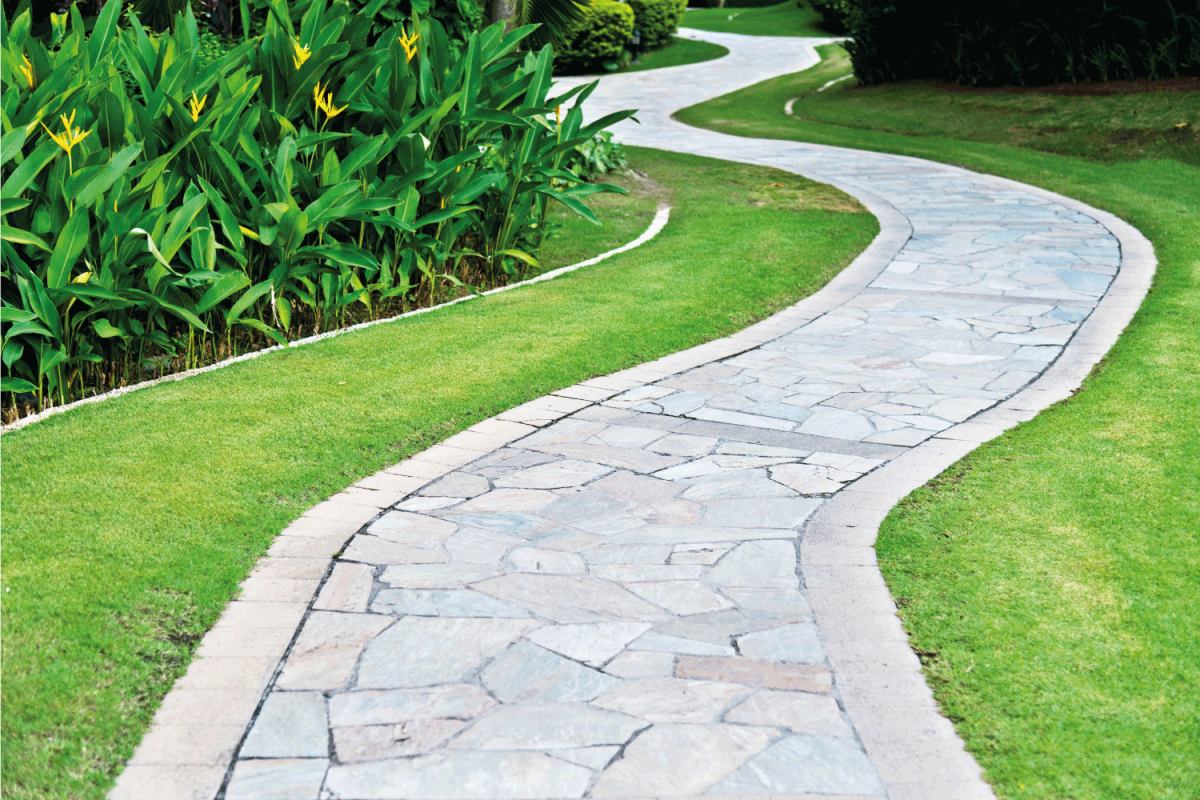
Flagstone is a flat stone that is commonly used for paving slabs or pathways, patios, flooring, fences, and roofing. Flagstone's form and earthy tones of browns, reds, grays, and blues make it a beautiful paving material for any outdoor landscaping project.
How To Make Wet Flagstones Non-slip?
Combine fine silica sand or an anti-slip ingredient with a penetrating stone or concrete sealant. Apply a thin coat of sealant to the surface and then sand it down. Allow it to cure for 24 hours before applying another coat of sealant.
See this penetrating sealant on Amazon.
What Are The Types Of Flagstones?
Flagstones have seven types commonly used in hardscaping. These are sandstone, quartzite, bluestone, limestone, travertine, basalt, and slate. Learn more about these different types below.
1. Sandstone
Sandstones are sedimentary rocks formed by layers of sand. The most common type of sandstone is the Arizona Flagstone. It has an earthy look with colors ranging from beige to red.
In dense, tightly packed forms, they are weather resistant.
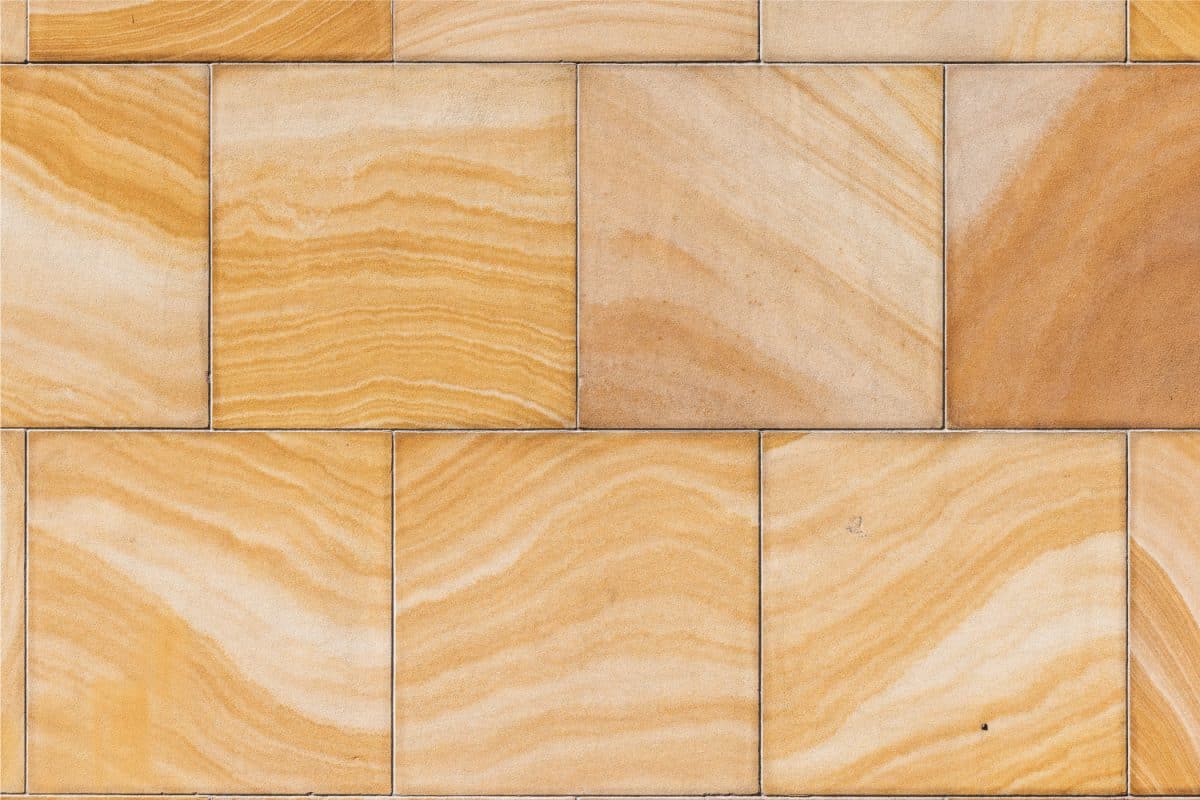
However, because it's porous and absorbs water, it can be damaged during freeze/thaw cycles. So to avoid stains, it should be sealed.
2. Quartzite
Quartzite is a metamorphic rock made up entirely of quartz sandstone and is hard and non-foliated. It has a glossy, smooth, and timeless appearance. Colors include silver, gold, and lighter tans, as well as blues, grays, and greens.
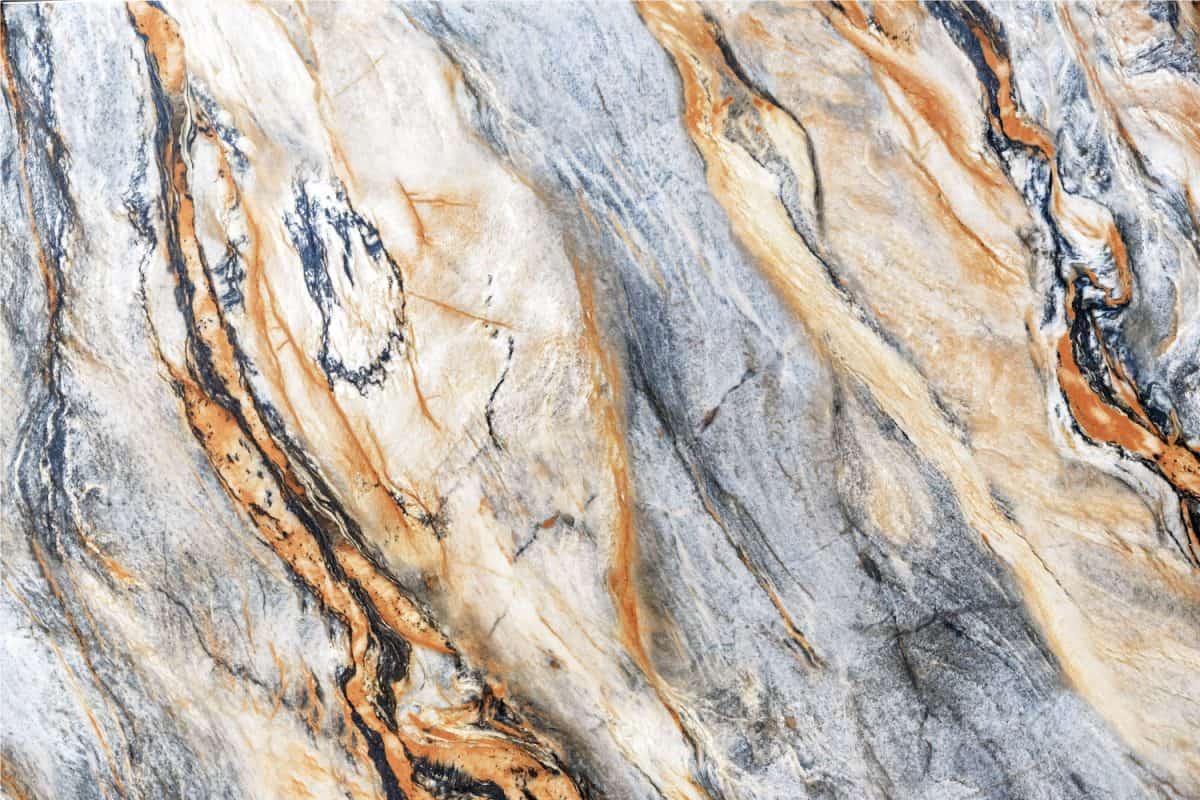
Quartzite is also resistant to wear and tear, weather, and strong chemicals. The surface is non-slip and stain-resistant, unlike sandstone.
Despite that, it's prone to etching and difficult to form. It also needs regular upkeep to keep its rough, textured surface clean.
3. Bluestone
Bluestone is a much more dense type of blue-grey sandstone. It's classical-looking with a very flat and rough texture. It comes in blue, gray, and purple tones.
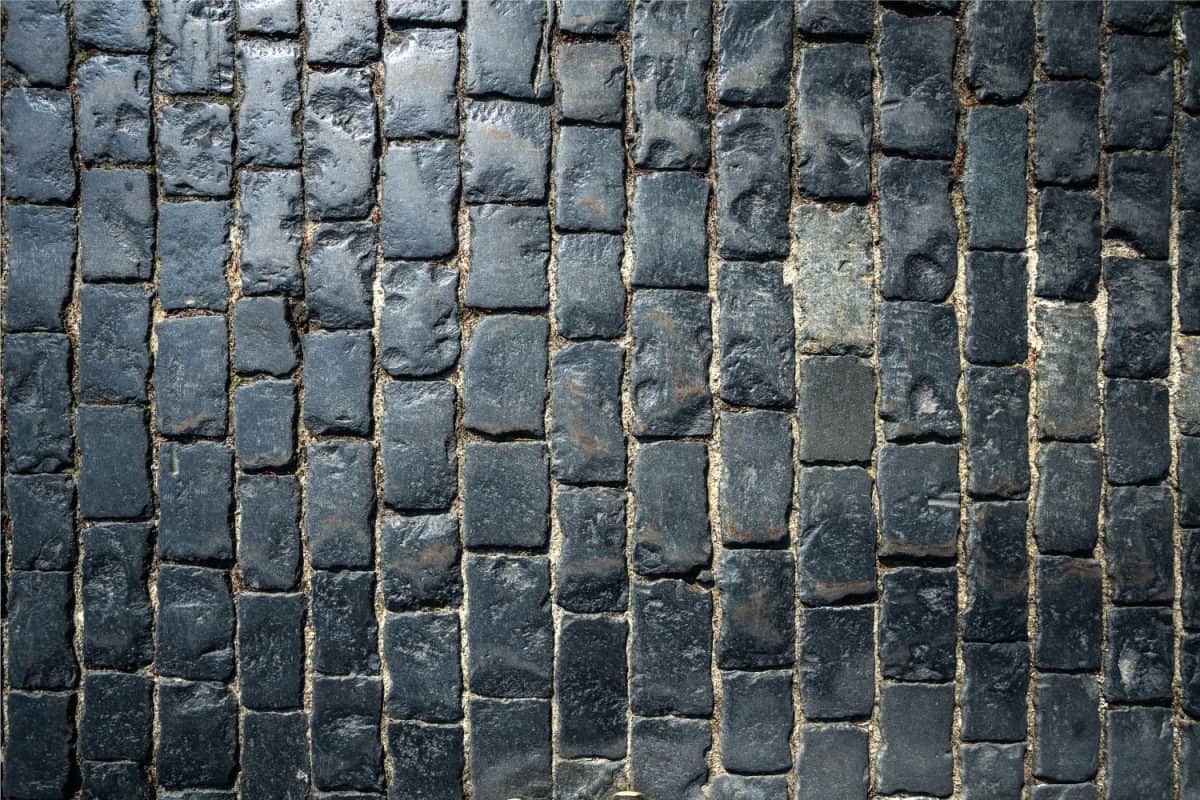
Bluestones are also dense, durable paving with a non-slip surface that can withstand harsh winters. However, it must be sealed properly to keep its color, enable it to withstand chlorine or saltwater, and prevent scratching and staining.
4. Limestone
A limestone is a form of carbonate sedimentary rock that is quite common. Calcite and aragonite are two calcium carbonate minerals with different crystal morphologies that make up the majority of them.
It has an elegant natural split surface that can be polished. Gray, beige, yellow, and black are among the colors available.

Limestones are weather-resistant and long-lasting in humid regions. Nevertheless, acid damage is a concern. The material is also quite hefty.
5. Travertine
Travertine is a type of limestone that develops in the vicinity of mineral springs, particularly hot springs. It has pitted holes and a weathered appearance. It also comes in browns, tans, and gray-blues in various tones.
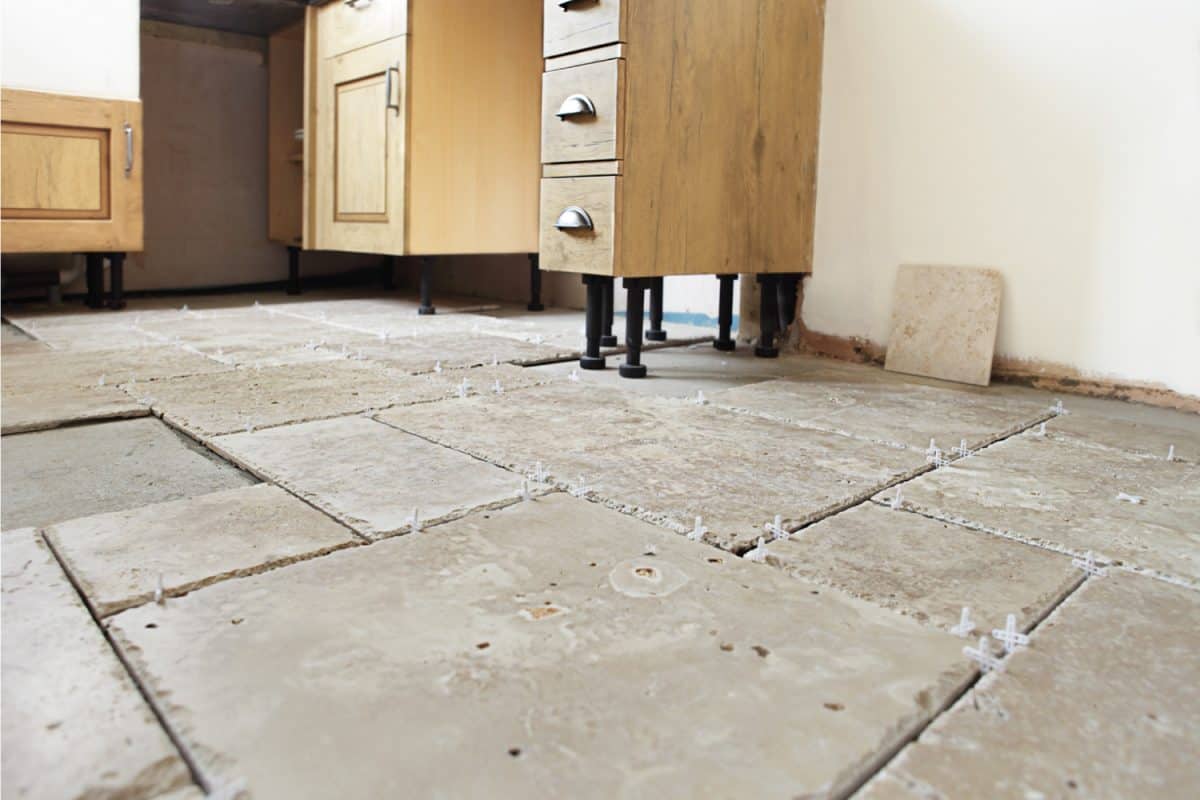
For outdoor surfaces, travertines are more durable and higher-end stones that keep cool. One drawback of using travertines is because of surface defects, they can be difficult to finish and maintain.
6. Basalt
Basalt is an aphanitic extrusive igneous rock that forms on the surface of a solid planet or moon when low-viscosity lava rich in magnesium and iron is exposed and rapidly cools. It is lightly textured and comes in beige, natural grey, or black color.
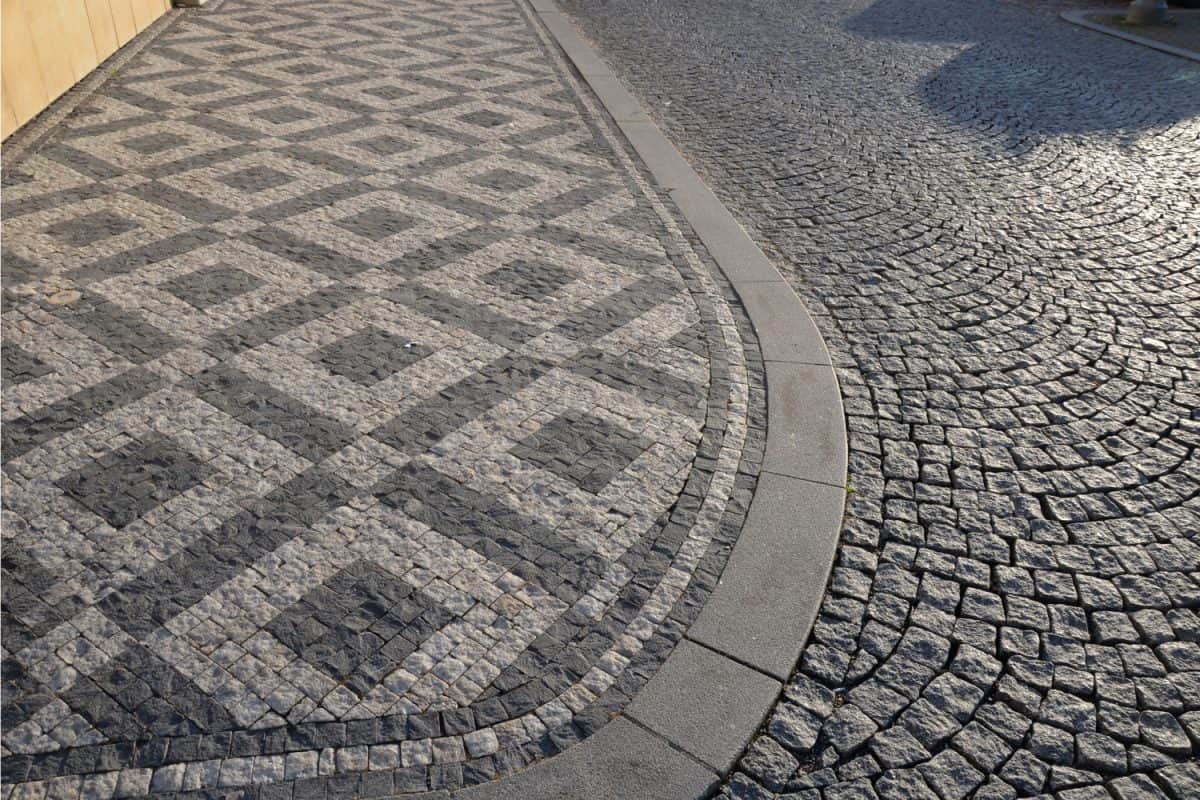
Basalt has excellent sound absorption and insulation. On the other hand, it has the potential to become monotonous in appearance.
7. Slate
Slate is a metamorphic rock derived from an underlying clay sedimentary rock by low-grade regional transformation. Sandstone is softer than sandstone or quartzite, with a flaky texture with silver-gray, green, copper tones.
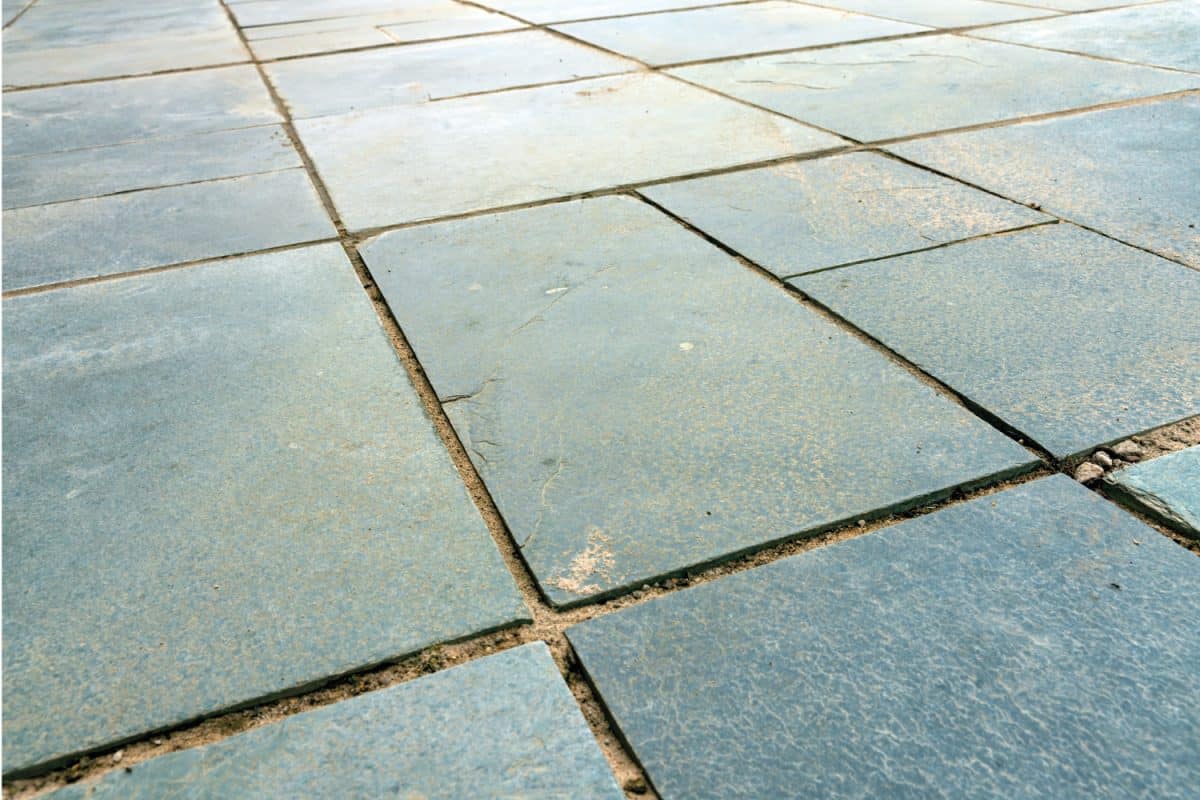
Because slates are simple to carve and shape, they're commonly used for wall cladding. Although, slates are easy to split, have limited availability in big sizes, and stain resistance and efflorescence reduction require sealing.
What Are The Pros And Cons Of Flagstone?
Like every other hardscaping solution, flagstone has its advantages and disadvantages. Here are a few pros and cons you might want to know.
Pros
Durable
Flagstones are very durable. They are expected to last for centuries if no big accidents have occurred and they are properly maintained.
Can Withstand Harsh Climate
Extreme climate and temperature have little effect on the flagstone. When the weather changes and becomes more intense, they do not compress, expand, crack, or chip.
Easy to Maintain
Flagstones can be cleaned through sweeping and spraying. In case of sand deposition, stains, or molds, you can remove it by using a bleach and water mix. When stones break, you can remove and replace only the affected stone/s.
Aesthetic
Flagstone comes in a wide selection of colors, hues, sizes, widths, and thicknesses, ensuring that the correct flagstone is available for any purpose or design. The natural irregularity of shape and texture of flagstone creates a visually fascinating, rustic, and ageless surface.
Cons
Irregular Shape
Ironically, the advantage of irregularity of flagstone can also be a disadvantage. The issue is that while flagstone is quarried in large, flat sheets, these sheets are not precise. Because flagstone creates an uneven surface, patios and walkways will always be slightly wobbly when placed.
Heavy
Because the stones are so heavy, installation takes a little longer even though the process is easy.
Color Fades
Unfortunately, the vibrant color of natural flagstone is not permanent. Color can fade several shades over time depending on the type of stone used, as the stone surface responds to the air and moisture in its new environment.
Staining
Flagstone is extremely porous, making it susceptible to staining from salt, chemicals, and oil. This porosity can be a problem in households with dogs and cats, especially if the pets are still being housetrained.
Slippery When Wet
Flagstone can become very slippery when wet, especially where it's used for pool patio surfacing and poolside surrounds, depending on the type used.
![Sidewalk with grass on the side. Is Flagstone Slippery When Wet [What You Should Know About Flagstone Hardscapes]](https://pavingplatform.com/wp-content/uploads/2022/02/Sidewalk-with-grass-on-the-side.-Is-Flagstone-Slippery-When-Wet-What-You-Should-Know-About-Flagstone-Hardscapes.png)
Final Thoughts
Flagstones are excellent and beautiful hardscape options. They are also durable, can withstand extreme weather conditions, and are easy to maintain. In addition, they add aesthetic value to your hardscape because of their unique shape.
However, like natural stones, flagstones can become slippery when wet. Also, because they are porous, they can be stained easily and their colors also fade over time. Even though they are easy to install, it still takes time since they are heavy.
Flagstones are versatile with a wide range of types and colors. With its different types, you can choose what suits best for your planned hardscape.
If you consider using flagstone, you can read this article on what to put in the gaps between flagstone.
Looking for other hardscape options? You can read these articles.


![Vibrant Red Paver Stone Path, Can You Spray Paver Sealer? [How To Apply It]](https://pavingplatform.com/wp-content/uploads/2022/04/Vibrant-Red-Paver-Stone-Path-600x400.jpg)
![Properly laid out red pavers for a garden, Can You Tint Paver Sealer? [And How To]](https://pavingplatform.com/wp-content/uploads/2022/04/Properly-laid-out-red-pavers-for-a-garden-600x400.jpg)
